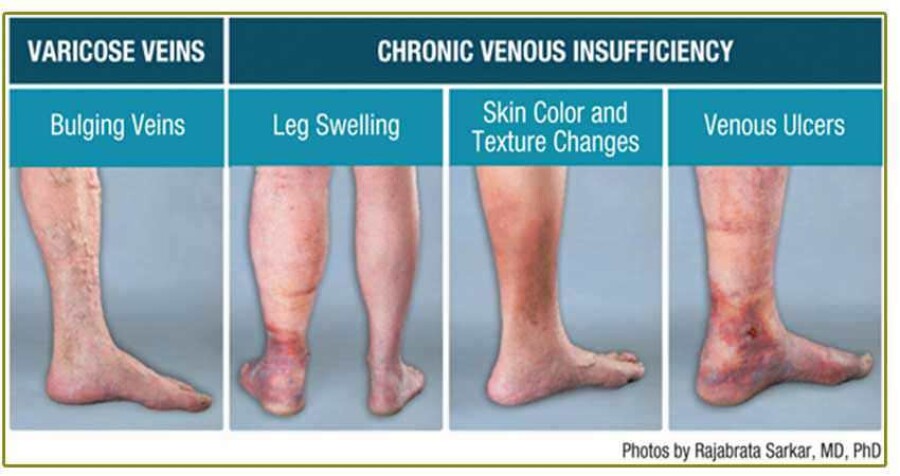10 Myths About Venous Insufficiency

“Vein treatments are for cosmetic concerns only.”
Often thought as a cosmetic nuisance, varicose veins represent an underlying venous disease that can lead to chronic pain, swelling and skin ulcerations.
“My parents and grandparents suffered, so I’ll suffer too.”
Nowadays there exists office based, minimally invasive, safe and effective treatments available.
“Insurance does not cover vein treatment.”
Because varicose veins and chronic venous disease can lead to more serious and expensive medical conditions, most insurance plans will cover treatment.
“Spider veins are strictly cosmetic.”
They can be an indicator of underlying venous disease. Many times the changes you see on the surface are just the “tip of the iceberg,” and a more thorough evaluation should be completed to determine the extent of the disease.
“A vascular surgeon and a hospital are required to treat venous insufficiency.”
The highly-invasive vein stripping formerly performed by vascular surgeons (which required a sometimes-lengthy hospital stay) is now considered an antiquated method for treating chronic venous insufficiency. Current treatments involve minimally invasive ultrasound-guided procedures. These procedures now offer no downtime and can be performed on an outpatient basis in a clinic setting.
“Compression stockings cure vein disease.”
Although compression stockings may help to reduce pain and swelling, they only help to manage symptoms and do not provide a cure.
“Women should wait after child-bearing years before seeking treatment.”
With treatments being 98% successful, the new paradigm ought to be that obstetric physicians send their patients for venous insufficiency evaluations prior to their getting pregnant. This would prevent them from having the pain and discomfort so often associated with varicose veins during pregnancy.
“Ulcers only require wound care.”
Venous skin ulcers are slow to heal and often come back if steps are not taken to prevent them from recurring. Treating the underlying vein disease has proven to increase ulcer-healing rates and decrease recurrence rates significantly.
“Men do not get varicose veins.”
It is reported that 42% of men will suffer with some form of chronic venous insufficiency by the time they reach their 60s. Though men are less likely to seek vein treatment, they are known to be at risk for more severe venous disease if they ignore the symptoms.
“Varicose veins always reoccur.”
The recurrence of varicose veins after treatment is a myth born from vein stripping – a highly invasive treatment method that has since become virtually obsolete. While done with best intentions, vein stripping actually contributed to the recurrence of varicose veins. Today, veins treated by a qualified physician result in recurrence rates well below 5%.
If you have questions or are unsure about the status of your veins, our Patient Service Specialists are standing by to answer all your questions and help put your mind at ease. You can reach us by calling 240-965-3915 or by completing this form.